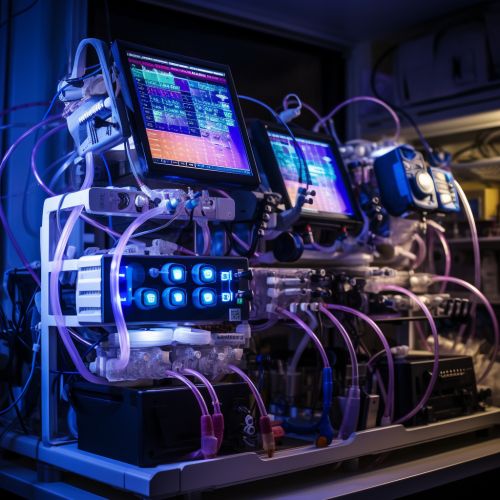Cardiopulmonary bypass
Introduction
Cardiopulmonary bypass (CPB) is a technique that temporarily takes over the function of the heart and lungs during surgery, maintaining the circulation of blood and the oxygen content of the body. The CPB pump itself is often referred to as a heart–lung machine or "the pump". CPB is a complex procedure that requires a team of medical professionals and specialized equipment to ensure patient safety and successful surgical outcomes.
History
The development of cardiopulmonary bypass dates back to the early 20th century. The first successful use of the heart-lung machine was reported by Dr. John Gibbon in 1953. Since then, the technique has been refined and improved, becoming a standard procedure in cardiac surgery.
Mechanism
The cardiopulmonary bypass machine functions as an artificial heart and lung for the patient during surgery. It consists of a pump and an oxygenator. The pump circulates the blood, while the oxygenator removes carbon dioxide from the blood and adds oxygen. The oxygenated blood is then returned to the patient's body.
Procedure
The procedure for cardiopulmonary bypass involves several steps. First, the patient is connected to the heart-lung machine via cannulas inserted into the large blood vessels of the heart. The blood is then diverted from the heart to the machine, where it is oxygenated and returned to the body. During this time, the heart can be stopped, allowing the surgeon to operate on it without blood flow. Once the surgery is complete, the heart is restarted, and the patient is gradually weaned off the machine.
Risks and Complications
While cardiopulmonary bypass is a lifesaving procedure, it is not without risks. Complications can include bleeding, infection, stroke, and organ damage. The risk of complications increases with the duration of the bypass and the overall health of the patient.
Advancements and Future Directions
Advancements in cardiopulmonary bypass technology continue to improve patient outcomes. These include the development of miniaturized heart-lung machines, improved oxygenators, and techniques to minimize the inflammatory response to bypass. Future directions in CPB research include further miniaturization of equipment, development of biocompatible materials, and exploration of alternative techniques for supporting the heart and lungs during surgery.


